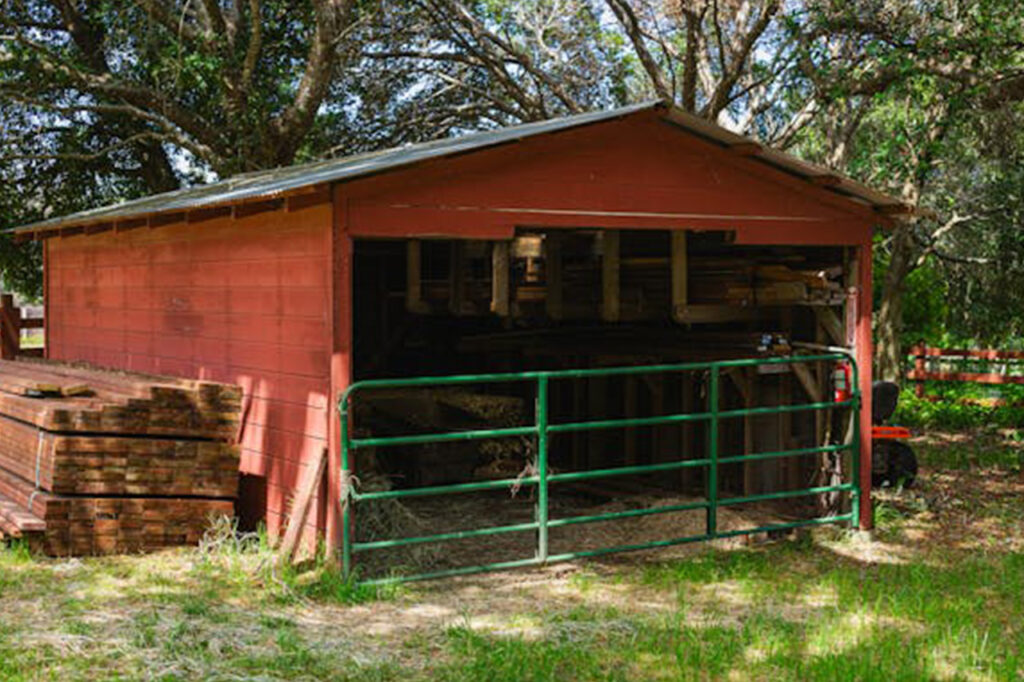Metal barns have become increasingly popular among property owners seeking durability, functionality, and long term value. As agriculture and rural infrastructure evolve, so do the options for constructing barns that suit modern needs. Two of the most common types of metal barns are prefab and custom built structures. Each comes with distinct advantages and limitations, and understanding these differences is essential for making an informed decision.
Understanding Prefabricated Metal Barns
Prefabricated metal barns are constructed using components that are manufactured off site in a controlled environment. These components are produced according to predetermined templates and are then shipped to the location for assembly. The factory setting allows for better quality control during production, as each part is made under consistent conditions using precise machinery and standardized procedures. This results in uniform structural integrity and fewer defects, which can lead to smoother assembly and long term durability.
One of the main advantages of prefabricated metal barns is the efficiency they offer in both time and labor. Since much of the work is done ahead of time in the factory, on site assembly tends to be significantly faster than traditional construction methods. Installation can be completed in a matter of days rather than weeks or months. This time saving aspect is particularly valuable for agricultural or commercial operations that cannot afford lengthy disruptions or delays. In many cases, property owners can begin using their new barn almost immediately after installation is complete.
Cost savings also contribute to the appeal of prefabricated metal barns. Because the design and production processes are standardized, manufacturers can keep material waste to a minimum and streamline labor expenses. These savings are often passed on to the buyer in the form of lower prices compared to custom built alternatives. Additionally, prefabricated kits typically require fewer specialized tools and contractors for installation, which further reduces total project costs. For budget conscious buyers who still want a strong and reliable structure, prefabricated metal barns offer an efficient and affordable option.
Benefits of Prefab Metal Barns
One of the main attractions of prefabricated barns is their affordability. Manufacturing in bulk reduces material costs and labor expenses. The efficiency of production often results in faster lead times. These barns also offer predictability in design, which reduces the complexity of planning and building.
In addition, prefab barns are engineered to comply with common building codes and environmental standards. This simplifies the permitting process in many areas. The modular nature of these barns allows for relatively easy transport and assembly. Many manufacturers provide step by step instructions, and some even offer on site installation services.
Limitations of Prefab Barns
Despite their advantages, prefab metal barns are not suitable for every property or use case. Their standardized designs may not accommodate specialized needs. Owners looking for unique architectural features or specific layout requirements might find prefab options limiting.
Modifying a prefab barn after purchase can be expensive and complex. Once the components are fabricated, making changes to the structure may require additional engineering approval or replacement parts. This reduces the flexibility of the design. Additionally, because prefab barns are mass produced, they might not reflect the aesthetic preferences of every owner.
Exploring Custom Built Metal Barns
Custom built metal barns are designed from the ground up to meet the specific needs and preferences of the property owner. These barns are usually constructed on site using materials selected for the project. This allows for complete flexibility in layout, dimensions, and finishes.
Advantages of Custom Built Barns
Customization allows owners to create barns that suit their exact operational and aesthetic requirements. From the number of stalls to the inclusion of storage rooms or living quarters, custom built barns offer unlimited options. This level of personalization is ideal for commercial farms, equestrian facilities, or hobby farms with unique needs.
Custom built barns can also be designed to harmonize with existing architecture on the property. Materials can be chosen for their appearance, durability, and environmental performance. This helps enhance the overall value and functionality of the property.
Challenges of Custom Construction
Designing and building a custom barn requires a longer timeline than purchasing a prefab kit. The process involves working with architects, engineers, and contractors. Every aspect must be planned in detail, and any changes during construction can increase costs and delay completion.
Another consideration is the permitting process. Custom structures often require site specific approval, which can be more complex and time consuming. Local regulations, soil conditions, and zoning requirements must all be considered. These factors can influence both the design and construction schedule.
Comparing Time and Labor
Prefab barns are generally quicker to assemble. The components arrive pre cut and drilled, which reduces on site labor and minimizes construction errors. Most kits can be erected in a matter of days with a small team.
Custom barns require more intensive labor and supervision. Site preparation, material delivery, and construction coordination all contribute to a longer timeline. Labor costs are usually higher because more skilled workers are needed throughout the project.
Comparing Costs and Budget Considerations
Prefab metal barns offer a clear advantage in upfront costs. The ability to manufacture components in a controlled setting reduces waste and streamlines production. This is ideal for budget conscious property owners seeking a dependable structure without extra frills.
Custom built barns require a larger initial investment. Material selection, custom design fees, and labor expenses all contribute to the final cost. However, the increased value, functionality, and longevity of the structure can make it a worthwhile investment over time.
Durability and Longevity
Both prefab and custom metal barns are durable and can withstand harsh weather conditions. Metal structures resist pests, rot, and fire better than traditional wood barns. Longevity depends largely on the quality of materials and construction practices.
Prefab barns benefit from factory precision and standardized engineering. Custom barns benefit from tailored solutions and superior craftsmanship. Regular maintenance is essential for both types to ensure long term performance.
Flexibility for Future Expansion
Expansion options are more limited with prefab barns. Because the design is standardized, adding new sections may require matching original components or re-engineering certain areas. Some kits allow for modular expansion, but the options are often predefined.
Custom barns offer greater flexibility for future changes. Owners can plan for phased construction or include structural features that make expansion easier. This is especially useful for growing farms or evolving business needs.
Aesthetic Appeal and Property Value Prefab barns are functional and utilitarian in appearance. While manufacturers offer a range of finishes and colors, they may lack the architectural detail of custom structures. Their design is focused on efficiency rather than aesthetics.
Custom barns can be designed to complement the landscape and architectural style of the home or other buildings. This can enhance curb appeal and increase overall property value. A well designed barn can become a focal point and a source of pride for property owners.
Environmental Impact
Prefab barns produce less construction waste due to controlled manufacturing. Efficient use of materials contributes to a lower environmental footprint. Transporting the kit to the site uses less fuel and energy than transporting raw materials for on site construction.
Custom barns can also be environmentally friendly if designed with sustainability in mind. Owners can choose energy efficient materials and incorporate features such as rainwater collection or natural ventilation. The environmental performance of a custom barn depends on the choices made during planning and construction.
Choosing the Right Option for Your Needs
The decision between a prefab and custom built metal barn depends on the owner’s priorities. Those seeking a quick, cost effective, and reliable structure may find prefab barns to be the ideal solution. Those with specific design requirements or long term operational goals may benefit from the customization and flexibility of a bespoke design.
Both options offer strong, durable shelters for livestock, equipment, and storage. Evaluating your current and future needs, budget, and site conditions can help determine which approach offers the best value.
Conclusion
Metal barns are a smart investment for property owners who need reliable and long lasting structures. Prefab and custom built barns each offer distinct benefits and limitations. Prefab barns provide speed, cost savings, and ease of installation. Custom barns deliver tailored design, expanded functionality, and aesthetic integration.
Choosing between the two requires careful consideration of your goals, resources, and timeline. With proper planning and execution, either option can serve as a valuable addition to your property for years to come.

